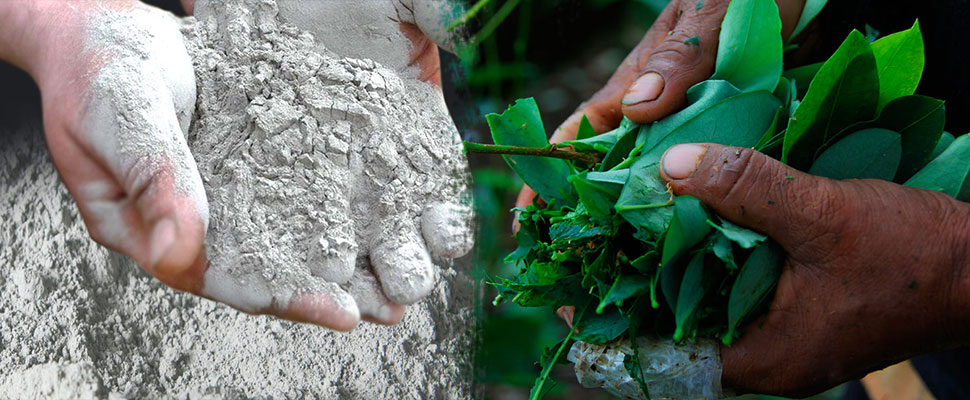It is not coca what is consumed, it is cement and gasoline
According to The PubChem Project, "the leaves only contain 1% of total cocaine"

Flour, creams, syrups, infusions, ointments and analgesics are some of the products derived from the coca leaf. That traditional plant that the Incas chewed to get rid of sleep, endure hunger, give them strength to work and combat the effects of height, is now processed to be one of the most consumed drugs in the world. According to the New Zealand Drug Foundation, after cannabis, cocaine is the most common drug shown in movies. However, in order to become the white powder that we become used to see in Hollywood, there is a chemical process in which the leaves are picked, chopped and left to ferment.
Leer en español: En realidad no es coca lo que se consume, es cemento y gasolina
It is in this step where the properties of the coca leaf lose their concentration. According to The PubChem Project, "leaves only contain 1% of total cocaine." After the fermentation, lime or cement is added, mixed with gasoline and left to stand. To achieve the base paste, explained the Pacifista! portal, the mixture is filtered with sulfuric acid and ammonia and finally the water evaporates. Afterwards, it is diluted in oil and hydrochloric acid, from which comes the pure cocaine that is pressed in bricks, which are put in the microwave for 8 minutes and then dried, packed, sealed and sold.
However, the alteration process does not stop there. Once the drug reaches the hands of the dealers, they continue to manipulate the product. Because it is so expensive, they need to make the most of it and, according to the National Institute on Drug Abuse, distributors can mix pure cocaine with corn starch, talcum powder, baking soda or flour. Other dealers add different drugs such as procaine (cocaine derivative) or amphetamine. At this point, the purity level of the drug can reach 10% or 40%.
You can also read: Medical marijuana: An alternative business for Latin America
This questionable process does not stop around 17 million people to consume cocaine in 2014, according to the 2017 World Drug Report of the United Nations Office on Drugs and Crime (UNODC). Due to its chemical compounds, with only one line of cocaine you can get to feel happiness and extreme energy, hypersensitivity in sight, sound and smell, paranoia and even irritability. But its effects tend to last only a few minutes or even an hour, so the need to return to consume becomes stronger, which leads to a serious addiction.
This is how then, what was once a sacred plant that the Indians worshiped and was used as an offering for the Pachamama, today undergoes a process of transformation where chemicals and hydrocarbons overshadow their ancestral qualities.
LatinAmerican Post | Laura Viviana Guevara Muñoz
Translated from "En realidad no es coca lo que se consume, es cemento y gasolina"





